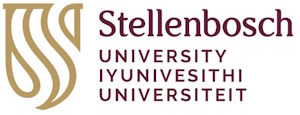
By Dr Neill Goosen
Do you regard seaweeds as special? If not, you are part of a rapidly shrinking group of the global population. The reason for this is simple: Seaweeds are awesome!
Worldwide, the industry, academia and the wider public realise that as a strategic source, seaweeds can help to solve problems related to sustainable industrial development and environmental degradation. It can also enable us to move away from an economy based on fossil fuels. We know seaweed contains a variety of useful compounds, some of which cannot be found in any plants grown on land. We know seaweeds grow very fast, require no fertilisers to be farmed and do not compete for farmland or freshwater. Furthermore, many species are already farmed on a large scale in different parts of the world. What we do not know (yet), is how to best process seaweeds to recover both valuable compounds and bioenergy, in order to make the most efficient use of every single piece that gets harvested.
The sustainable processing of a major South African seaweed, kelp, is the topic of an ambitious collaborative project in the Department of Process Engineering, coordinated by Dr Neill Goosen. The project is a partnership between Stellenbosch University, a local company, CMD Industries, and the Cape Peninsula University of Technology (CPUT). The aim is firstly to explore how to recover different high-value and health-promoting compounds found in kelp by optimising different environmentally friendly processing methods. Secondly, it is to determine how these compounds can be incorporated into existing foods (ranging from health bread to ice-cream) without compromising consumer acceptability. All of this needs to be accomplished with minimal use of water and energy in processing, while utilising the maximum amount of the raw material fed into a commercial production process.
Results thus far are preliminary, but extremely encouraging, especially in terms of the recovery of different polysaccharides found exclusively in seaweeds. Fucoidan, laminarin and alginate have very specific properties, and methods to recover these via enzymatic methods or solvent-free water extractions are currently being optimised. Residues from these extractions are being converted into bioenergy via anaerobic digestion, while the extracted material is being tested in food systems and for their ability to help synthesise nanoparticles with particular properties.
After all the finer science has been done, the overall aim of developing a commercially viable processing plant still needs to be accomplished. To achieve this, all the different processing methods are being combined into a techno-economic viability study to determine which combination of processing methods and conditions will result in the most profitable plant. The first results are being presented at different conferences during 2019, and hopefully some interesting journal papers will see the light soon.
So, if you are not on the seaweed party boat yet, you better get aboard before space runs out. We may not know everything about seaweeds yet, but one thing we do know is that seaweeds are awesome!
Photo:
Zwonaka Mapholi (master’s student) investigating how the extraction of high-value fucoidan from kelp can be enhanced through ultrasonication.




